RBS 2012 Annual Report Download - page 163
Download and view the complete annual report
Please find page 163 of the 2012 RBS annual report below. You can navigate through the pages in the report by either clicking on the pages listed below, or by using the keyword search tool below to find specific information within the annual report.-
 1
1 -
 2
2 -
 3
3 -
 4
4 -
 5
5 -
 6
6 -
 7
7 -
 8
8 -
 9
9 -
 10
10 -
 11
11 -
 12
12 -
 13
13 -
 14
14 -
 15
15 -
 16
16 -
 17
17 -
 18
18 -
 19
19 -
 20
20 -
 21
21 -
 22
22 -
 23
23 -
 24
24 -
 25
25 -
 26
26 -
 27
27 -
 28
28 -
 29
29 -
 30
30 -
 31
31 -
 32
32 -
 33
33 -
 34
34 -
 35
35 -
 36
36 -
 37
37 -
 38
38 -
 39
39 -
 40
40 -
 41
41 -
 42
42 -
 43
43 -
 44
44 -
 45
45 -
 46
46 -
 47
47 -
 48
48 -
 49
49 -
 50
50 -
 51
51 -
 52
52 -
 53
53 -
 54
54 -
 55
55 -
 56
56 -
 57
57 -
 58
58 -
 59
59 -
 60
60 -
 61
61 -
 62
62 -
 63
63 -
 64
64 -
 65
65 -
 66
66 -
 67
67 -
 68
68 -
 69
69 -
 70
70 -
 71
71 -
 72
72 -
 73
73 -
 74
74 -
 75
75 -
 76
76 -
 77
77 -
 78
78 -
 79
79 -
 80
80 -
 81
81 -
 82
82 -
 83
83 -
 84
84 -
 85
85 -
 86
86 -
 87
87 -
 88
88 -
 89
89 -
 90
90 -
 91
91 -
 92
92 -
 93
93 -
 94
94 -
 95
95 -
 96
96 -
 97
97 -
 98
98 -
 99
99 -
 100
100 -
 101
101 -
 102
102 -
 103
103 -
 104
104 -
 105
105 -
 106
106 -
 107
107 -
 108
108 -
 109
109 -
 110
110 -
 111
111 -
 112
112 -
 113
113 -
 114
114 -
 115
115 -
 116
116 -
 117
117 -
 118
118 -
 119
119 -
 120
120 -
 121
121 -
 122
122 -
 123
123 -
 124
124 -
 125
125 -
 126
126 -
 127
127 -
 128
128 -
 129
129 -
 130
130 -
 131
131 -
 132
132 -
 133
133 -
 134
134 -
 135
135 -
 136
136 -
 137
137 -
 138
138 -
 139
139 -
 140
140 -
 141
141 -
 142
142 -
 143
143 -
 144
144 -
 145
145 -
 146
146 -
 147
147 -
 148
148 -
 149
149 -
 150
150 -
 151
151 -
 152
152 -
 153
153 -
 154
154 -
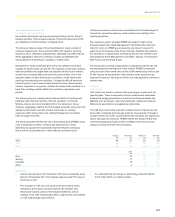 155
155 -
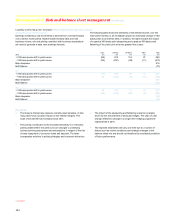 156
156 -
 157
157 -
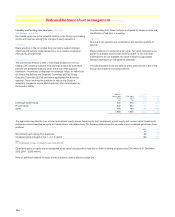 158
158 -
 159
159 -
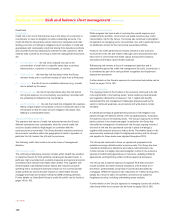 160
160 -
 161
161 -
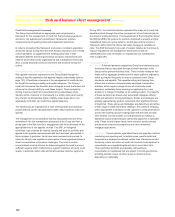 162
162 -
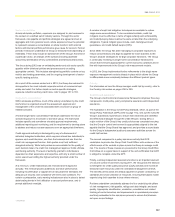 163
163 -
 164
164 -
 165
165 -
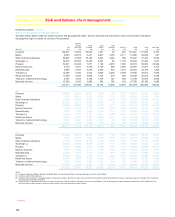 166
166 -
 167
167 -
 168
168 -
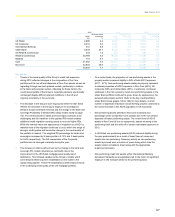 169
169 -
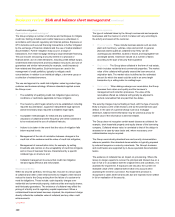 170
170 -
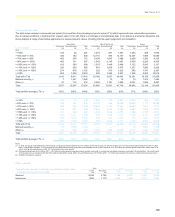 171
171 -
 172
172 -
 173
173 -
 174
174 -
 175
175 -
 176
176 -
 177
177 -
 178
178 -
 179
179 -
 180
180 -
 181
181 -
 182
182 -
 183
183 -
 184
184 -
 185
185 -
 186
186 -
 187
187 -
 188
188 -
 189
189 -
 190
190 -
 191
191 -
 192
192 -
 193
193 -
 194
194 -
 195
195 -
 196
196 -
 197
197 -
 198
198 -
 199
199 -
 200
200 -
 201
201 -
 202
202 -
 203
203 -
 204
204 -
 205
205 -
 206
206 -
 207
207 -
 208
208 -
 209
209 -
 210
210 -
 211
211 -
 212
212 -
 213
213 -
 214
214 -
 215
215 -
 216
216 -
 217
217 -
 218
218 -
 219
219 -
 220
220 -
 221
221 -
 222
222 -
 223
223 -
 224
224 -
 225
225 -
 226
226 -
 227
227 -
 228
228 -
 229
229 -
 230
230 -
 231
231 -
 232
232 -
 233
233 -
 234
234 -
 235
235 -
 236
236 -
 237
237 -
 238
238 -
 239
239 -
 240
240 -
 241
241 -
 242
242 -
 243
243 -
 244
244 -
 245
245 -
 246
246 -
 247
247 -
 248
248 -
 249
249 -
 250
250 -
 251
251 -
 252
252 -
 253
253 -
 254
254 -
 255
255 -
 256
256 -
 257
257 -
 258
258 -
 259
259 -
 260
260 -
 261
261 -
 262
262 -
 263
263 -
 264
264 -
 265
265 -
 266
266 -
 267
267 -
 268
268 -
 269
269 -
 270
270 -
 271
271 -
 272
272 -
 273
273 -
 274
274 -
 275
275 -
 276
276 -
 277
277 -
 278
278 -
 279
279 -
 280
280 -
 281
281 -
 282
282 -
 283
283 -
 284
284 -
 285
285 -
 286
286 -
 287
287 -
 288
288 -
 289
289 -
 290
290 -
 291
291 -
 292
292 -
 293
293 -
 294
294 -
 295
295 -
 296
296 -
 297
297 -
 298
298 -
 299
299 -
 300
300 -
 301
301 -
 302
302 -
 303
303 -
 304
304 -
 305
305 -
 306
306 -
 307
307 -
 308
308 -
 309
309 -
 310
310 -
 311
311 -
 312
312 -
 313
313 -
 314
314 -
 315
315 -
 316
316 -
 317
317 -
 318
318 -
 319
319 -
 320
320 -
 321
321 -
 322
322 -
 323
323 -
 324
324 -
 325
325 -
 326
326 -
 327
327 -
 328
328 -
 329
329 -
 330
330 -
 331
331 -
 332
332 -
 333
333 -
 334
334 -
 335
335 -
 336
336 -
 337
337 -
 338
338 -
 339
339 -
 340
340 -
 341
341 -
 342
342 -
 343
343 -
 344
344 -
 345
345 -
 346
346 -
 347
347 -
 348
348 -
 349
349 -
 350
350 -
 351
351 -
 352
352 -
 353
353 -
 354
354 -
 355
355 -
 356
356 -
 357
357 -
 358
358 -
 359
359 -
 360
360 -
 361
361 -
 362
362 -
 363
363 -
 364
364 -
 365
365 -
 366
366 -
 367
367 -
 368
368 -
 369
369 -
 370
370 -
 371
371 -
 372
372 -
 373
373 -
 374
374 -
 375
375 -
 376
376 -
 377
377 -
 378
378 -
 379
379 -
 380
380 -
 381
381 -
 382
382 -
 383
383 -
 384
384 -
 385
385 -
 386
386 -
 387
387 -
 388
388 -
 389
389 -
 390
390 -
 391
391 -
 392
392 -
 393
393 -
 394
394 -
 395
395 -
 396
396 -
 397
397 -
 398
398 -
 399
399 -
 400
400 -
 401
401 -
 402
402 -
 403
403 -
 404
404 -
 405
405 -
 406
406 -
 407
407 -
 408
408 -
 409
409 -
 410
410 -
 411
411 -
 412
412 -
 413
413 -
 414
414 -
 415
415 -
 416
416 -
 417
417 -
 418
418 -
 419
419 -
 420
420 -
 421
421 -
 422
422 -
 423
423 -
 424
424 -
 425
425 -
 426
426 -
 427
427 -
 428
428 -
 429
429 -
 430
430 -
 431
431 -
 432
432 -
 433
433 -
 434
434 -
 435
435 -
 436
436 -
 437
437 -
 438
438 -
 439
439 -
 440
440 -
 441
441 -
 442
442 -
 443
443 -
 444
444 -
 445
445 -
 446
446 -
 447
447 -
 448
448 -
 449
449 -
 450
450 -
 451
451 -
 452
452 -
 453
453 -
 454
454 -
 455
455 -
 456
456 -
 457
457 -
 458
458 -
 459
459 -
 460
460 -
 461
461 -
 462
462 -
 463
463 -
 464
464 -
 465
465 -
 466
466 -
 467
467 -
 468
468 -
 469
469 -
 470
470 -
 471
471 -
 472
472 -
 473
473 -
 474
474 -
 475
475 -
 476
476 -
 477
477 -
 478
478 -
 479
479 -
 480
480 -
 481
481 -
 482
482 -
 483
483 -
 484
484 -
 485
485 -
 486
486 -
 487
487 -
 488
488 -
 489
489 -
 490
490 -
 491
491 -
 492
492 -
 493
493 -
 494
494 -
 495
495 -
 496
496 -
 497
497 -
 498
498 -
 499
499 -
 500
500 -
 501
501 -
 502
502 -
 503
503 -
 504
504 -
 505
505 -
 506
506 -
 507
507 -
 508
508 -
 509
509 -
 510
510 -
 511
511 -
 512
512 -
 513
513 -
 514
514 -
 515
515 -
 516
516 -
 517
517 -
 518
518 -
 519
519 -
 520
520 -
 521
521 -
 522
522 -
 523
523 -
 524
524 -
 525
525 -
 526
526 -
 527
527 -
 528
528 -
 529
529 -
 530
530 -
 531
531 -
 532
532 -
 533
533 -
 534
534 -
 535
535 -
 536
536 -
 537
537 -
 538
538 -
 539
539 -
 540
540 -
 541
541 -
 542
542 -
 543
543
 |
 |

RBS GROUP 2012
161
Sector concentration
Across wholesale portfolios, exposures are assigned to, and reviewed in
the context of, a defined set of industry sectors. Through this sector
framework, risk appetite and portfolio strategies are agreed and set at
aggregate and more granular levels, where exposures have the potential
to represent excessive concentration or where trends in both external
factors and internal portfolio performance give cause for concern. Formal
periodic reviews are undertaken at Group or divisional level depending on
materiality. These may include an assessment of the Group’s franchise in
a particular sector, an analysis of the outlook (including downside
outcomes), identification of key vulnerabilities and stress/scenario tests.
The focus during 2012 was on embedding sector and sub-sector specific
appetite within divisional policies and processes and on setting
appropriate controls. This includes strengthening portfolio controls on key
metrics and lending parameters, and the ongoing development of sector-
specific lending policies.
As a result of the reviews carried out in 2012, the Group has reduced its
risk appetite in the most material corporate sectors of commercial real
estate and retail. For further details on sector-specific strategies,
exposure reduction and key credit risks, refer to pages 181 to 193.
Single-name concentration*
Within wholesale portfolios, much of the activity undertaken by the credit
risk function is organised around the assessment, approval and
management of the credit risk associated with a borrower or group of
related borrowers.
A formal single name concentration framework addresses the risk of
outsized exposure to a borrower or borrower group. The framework
includes specific and sometimes elevated approval requirements,
additional reporting and monitoring, and the requirement to develop plans
to address and reduce excess exposures over an appropriate timeframe.
Credit approval authority is discharged by way of a framework of
individual delegated authorities, which requires at least two individuals to
approve each credit decision, one from the business and one from the
credit risk management function. Both parties must hold sufficient
delegated authority. While both parties are accountable for the quality of
each decision taken, the credit risk management approver holds ultimate
sanctioning authority. The level of authority granted to individuals is
dependent on their experience and expertise, with only a small number of
senior executives holding the highest authority provided under the
framework.
At a minimum, credit relationships are reviewed and re-approved
annually. The renewal process addresses: borrower performance,
including reconfirmation or adjustment of risk parameter estimates; the
adequacy of security; and compliance with terms and conditions. For
certain counterparties, early warning indicators are also in place to detect
deteriorating trends in limit utilisation or account performance, and to
prompt additional oversight.
A number of credit risk mitigation techniques are available to reduce
single name concentrations. To be considered suitable, credit risk
mitigants must be effective in terms of legal certainty and enforceability
and maturity/expiry dates must be the same or later than the underlying
obligations. Typical mitigant types include, cash, bank/government
guarantees, and credit default swaps (CDS).
Since 2009, the Group has been managing its corporate exposures to
reduce concentrations and align its appetite for future business to the
Group’s broader strategies for its large corporate franchises. The Group
is continually reviewing its single name concentration framework to
ensure that it remains appropriate for current economic conditions and in
line with improvements in the Group’s risk measurement models.
In 2012, the Group implemented further refinements to the single name
exposure management controls already in place which allows the Group
to differentiate more consistently between the different product types.
Country
For information on how the Group manages credit risk by country, refer to
the Country risk section on pages 252 to 280.
Controls and assurance*
The Group’s credit control and assurance framework comprises three key
components: credit policy, policy compliance assurance and independent
assurance.
The foundation is the Group Credit Policy Standard, which, as part of the
Group Policy Framework (GPF) (refer to page 115), sets out the rules the
Group’s businesses must follow to ensure that credit risks are identified
and effectively managed through the credit lifecycle. During 2012, a
major revision of the Group’s key credit policies was completed ensuring
that the Group’s control environment is appropriately aligned to the risk
appetite that the Group Board has approved, and provides a sound basis
for the Group’s independent audit and assurance activities across the
credit risk function.
The second component is a policy assurance activity that GCR
undertakes to provide the Group Chief Credit Officer with evidence of the
effectiveness of the controls in place across the Group to manage credit
risk. The results of these reviews are presented to the Group Credit Risk
Committee on a regular basis in support of the self-certification that GCR
is obliged to complete under the GPF.
Finally, a strong independent assurance function is an important element
of a sound control environment. During 2011, the Group took the decision
to strengthen its credit quality assurance (CQA) activities and moved all
divisional CQA resources under the centralised management of GCR.
The benefits of this action are already apparent in greater consistency of
standards and cross-utilisation of resources, ensuring that subject matter
experts bring their expertise to bear where relevant.
Reviews undertaken consistently address the four underlying risk pillars
of: risk management, risk appetite, ratings and data integrity, and asset
quality. Appropriate identification, escalation, remediation and related
tracking of control breaches and improvements in operational processes
are firmly embedded in the assurance process to ensure that divisions
act upon review findings.
*unaudited
